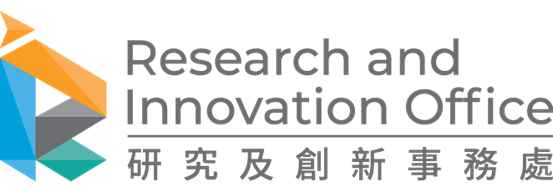PolyU unveils comprehensive zeolite structures, advancing development of catalysts for petrochemical and renewable energy
Zeolites, crystalline materials widely used in the petrochemical industry, serve as pivotal catalysts in the production of fine chemicals, with aluminium being the source of active sites within zeolite structures. A research team from The Hong Kong Polytechnic University (PolyU) has revealed the precise location of aluminium atoms in the zeolite framework. This discovery could facilitate the design of more efficient and stable catalysts, aimed at increasing the yield of petrochemical products, achieving efficient renewable energy storage, and controlling air pollution. This advancement will further promote the application of zeolites in relevant fields. The findings have been published in the international journal Science.
The research is led by Prof. Shik Chi Edman TSANG, Chair Professor of Catalysis and Materials of the PolyU Department of Applied Biology and Chemical Technology. He is joined by Prof. Tsz Woon Benedict LO, Associate Professor, along with first author Dr Guangchao LI, Research Assistant Professor, both from the same department. The team collaborated with researchers from the University of Oxford and the Innovation Academy for Precision Measurement Science and Technology of the Chinese Academy of Sciences.
The unique properties of zeolites, characterised by their well-defined microporous structure, high surface area, and tuneable acidity and basicity, make them indispensable in petrochemical refining, environmental catalysis and fine chemical synthesis. The distribution of substitutional aluminium atoms within the zeolite framework influences the geometry of molecular adsorbates, catalytic activity, and shape and size selectivity. However, accurately locating these aluminium atoms and understanding their impact on the catalytic behaviour of zeolites has posed challenges for the scientific community for decades.
In their research, the team focused on both lab-synthesised and commercial H-ZSM-5 zeolites to bridge the gap between fundamental research and practical application, optimising H-ZSM-5 for advanced catalytic processes. Notably, the team introduced an innovative approach that integrates synchrotron resonant soft X-ray diffraction — a powerful tool for studying atomic structure — with probe-assisted solid-state nuclear magnetic resonance (SSNMR) and molecular adsorption methods. This integration revealed the interactions of molecules at the active sites of aluminium atoms. Ultimately, the team has achieved a breakthrough in locating single and pairs of aluminium atoms in a commercial H-ZSM-5 zeolite.
The research findings will facilitate the development of more efficient and selective catalysts, which have wide-reaching implications beyond petrochemicals, offering potential benefits for industries such as renewable energy and pollution control. Reducing energy consumption, this can, in turn, promote sustainability and minimises environmental impact. With regard to petrochemical refining, these catalysts can improve fuel yield and quality, particularly for products like gasoline and olefins, simultaneously lowering energy usage. In the realm of environmental catalysis, they contribute to cleaner air and mitigating air pollution. For renewable energy and biofuels, these innovations advance hydrogen storage and utilisation processes, which are crucial for the development of a hydrogen economy.
Prof. Edman Tsang said, “This discovery is a game-changer as it precisely identifies the location of aluminium atoms in the zeolite framework and how they are positioned, providing for the first time a structural elucidation of zeolite frameworks. This breakthrough allows scientists to design more efficient and targeted zeolite catalysts, making the chemical process faster, more energy-efficient and more environmentally friendly.”
Prof. Benedict Lo said, “We explored and combined various techniques to achieve a multidimensional view of the distribution of aluminium atoms and their interaction with adsorbed molecules, leading to insights into crucial reaction mechanisms. This provides scientists with a deeper understanding of the structure of zeolites.”
Dr Guangchao Li said, “We will develop further novel synthesis methods to precisely control the distribution and concentration of aluminium atoms, as well as their pore architectures in zeolites. This advancement will enable the design of catalysts with optimised activity, selectivity and stability for specific industrial applications.”
Looking ahead, the team will work closely with industry partners to translate research outcomes into commercial applications. By leveraging the extensive networks and research strengths of the PolyU-Daya Bay Technology and Innovation Research Institute, which focuses on green chemistry and sustainable catalysis, the team will collaborate with domestic petrochemical companies to promote translational research and accelerate the commercialisation of advanced zeolite catalysts. This effort is bolstered by state-of-the-art PolyU facilities, including the only SSNMR facility in Hong Kong and the soon to be introduced first Dynamic Nuclear Polarisation SSNMR (DNP-SSNMR) spectrometer in the Greater Bay Area and southern China. These resources strengthen the team’s research capabilities and facilitate the advancement of their research efforts.





.jpg?bc=ffffff&h=202&w=385&rev=82923e0022e64c12aeadc24ba9f34c25&hash=DD28072A7B23BCB736D3971881CAB936)






